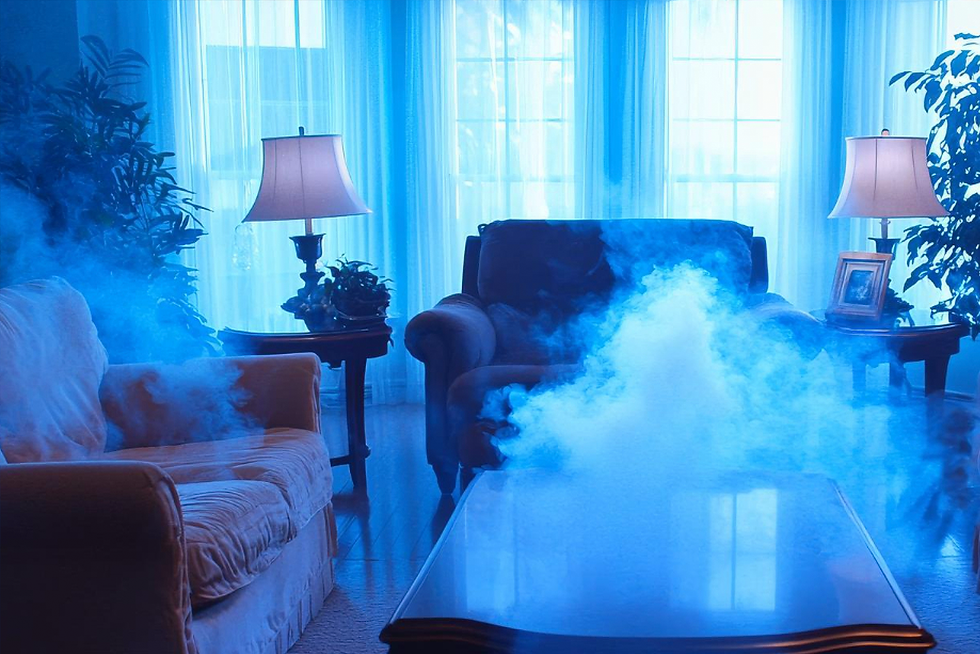Antimicrobial Use During Mold Remediation #IAQS
- Corey Provencal

- Dec 15, 2013
- 2 min read
The goal of mold remediation is to remove or clean mold contaminated materials in a way that prevents the emission of mold and dust contaminated with mold from leaving a work area and entering an occupied or non-remediation area, while protecting the health of workers performing the mold remediation. The goal is not to kill the mold it’s to collect and remove it.
The first step in solving an indoor mold problem is stopping the source of moisture. Next is to remove the mold growth. Next is the proper cleaning and removal of mold contaminated personal property and building material. The proper method is the collection and removal of the mold. Improper methods for cleaning mold include the application of fungicides and biocides to kill mold. These methods may render the mold non-viable (dead or incapable of growth); however, the mold and its by-products can still elicit negative health effects. The mold is still and allergen in your home until its removed.
A mold spore is an allergen that may or may not have the presence of mycotoxins. Some of these mold spores have the ability to germinate and may eventually grow to be a colony. To prevent this we correct the moisture that was supporting the mold growth and wala the mold will not have the available moisture to grow. Now all we have to do is collect the remaining allergens (aka mold spores) and remove them from the home.
If we simply apply fungicides or biocides to kill the mold so it won’t grow we still have the mold spore or allergen that may or may not have the presence of mycotoxins. But…the mold spores are still in your home, still an allergen, still have the potential of containing mycotoxins, and are now completely covered in a poison, just Wonderful. And the poisonous mold still needs to be removed.
New York City Department of Health NYCDH
“The use of gaseous, vapor-phase, or aerosolized biocides for remedial purposes is not recommended. The use of biocides in this manner can pose health concerns for people in occupied spaces of the building and for people returning to the treated space if used improperly.
American Industrial Hygiene Association AIHA
The goal of remediation is removal of mold and the moisture source because: a) biocides do not alter mycotoxins or allergens; b) it is generally not possible to get 100 percent kill with biocides; and c) because of (b), the newly deposited spores, re-growth will occur after the biocides if moisture returns.
North American Air Duct Cleaning Association NADCA position on Sanitizing Ductwork
The EPA has not registered any products for sanitizing or disinfecting ductwork. Further, no fungicides are registered for use in ductwork. It is a violation of federal law to use a product in a manner inconsistent with its labeling. For antimicrobials, this law is the Federal Insecticide, Fungicide, and Rodenticide Act (FIFRA). Therefore, any claims of sanitizing or disinfecting ductwork would require the use of a product in a manner inconsistent with its labeling, which is a violation of FIFRA.
U.S. Environmental Protection Agency EPA
“The purpose of mold remediation is to remove the mold to prevent human exposure and damage to building materials and furnishings. It is necessary to clean up mold contamination, not just to kill the mold. Dead mold is still allergenic, and some dead molds are potentially toxic.
John P. Lapotaire, CIEC
Certified Indoor Environmental Consultant
Indoor Air Quality Solutions, IAQS
Microshield Environmental Services, LLC
#microshield #IESO #FloridaDBPR #Chapter468 #HB5007 #indoorairquality #SenateBill2234 #FloridaMoldLaw #mold #IICRC #IEQ32 #LEED #freemoldinspection #DepartmentofBusinessandProfessionalRegulation #moldpretreatment #MoldRelatedServicesLicensingProgram #SB1244 #PCBBCAS1101 #HB4171 #moldtesting #moldprevention #IndoorEnvironmentalStandardOrganization #healthyhome #ResidentialMoldAssessment #HB5005 #FloridaStatutes #TheEPARRPRenovation #moldinspection #moldremoval #moldremediation #MoldScamsHomeownerBewareSPFInsulation #ASTM #johnlapotaire #USGB #RepairandPaintingRule #SprayPolyurethaneFoam #newhomemold #NuisanceOdorInvestigations #PartXVI #JohnPLapotaire #HouseBill713 #IAQS #ciec #airquality #activatedcarbonfilter









Comments